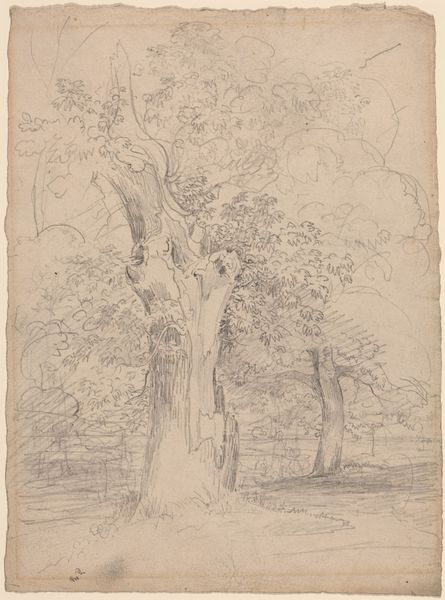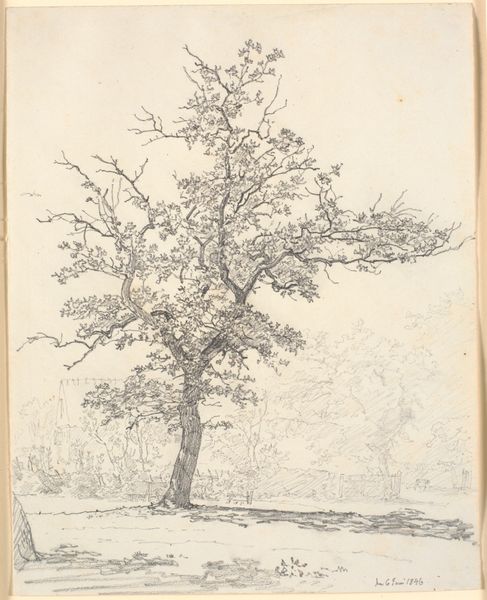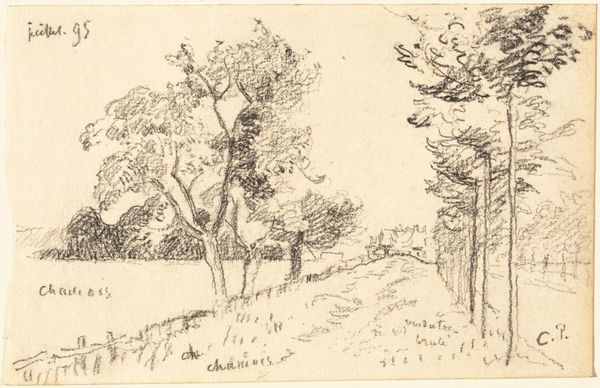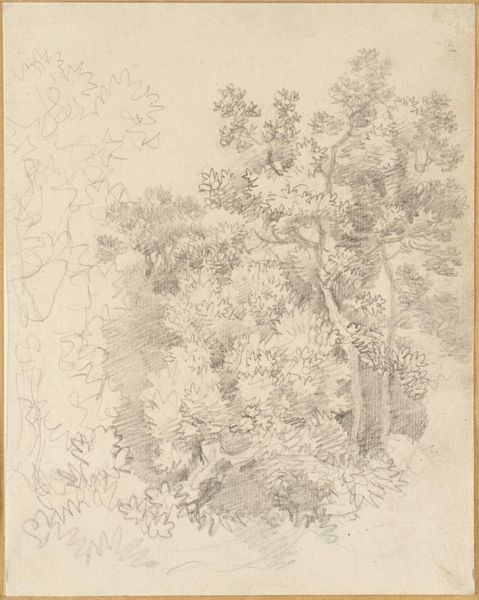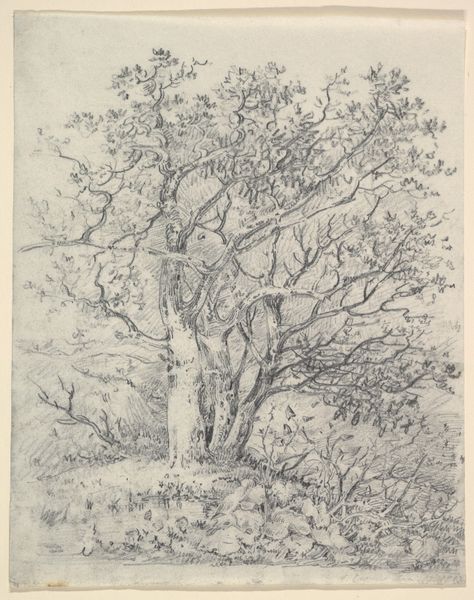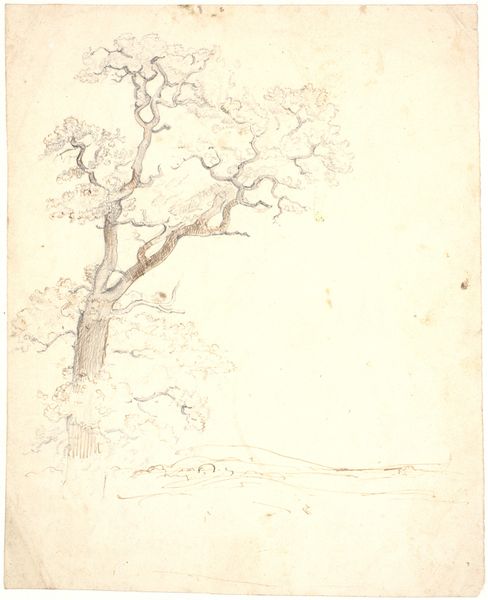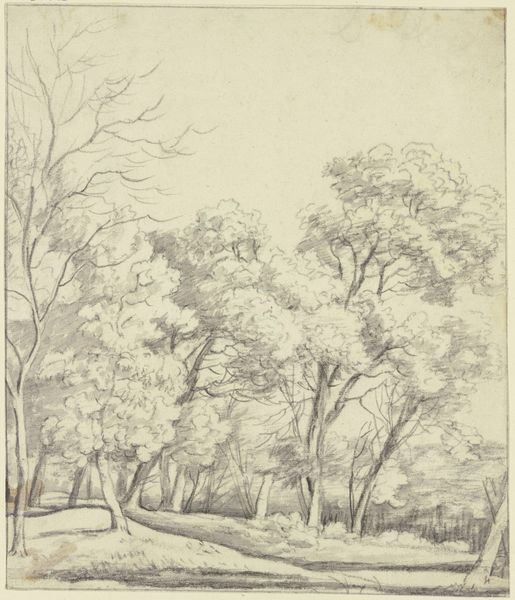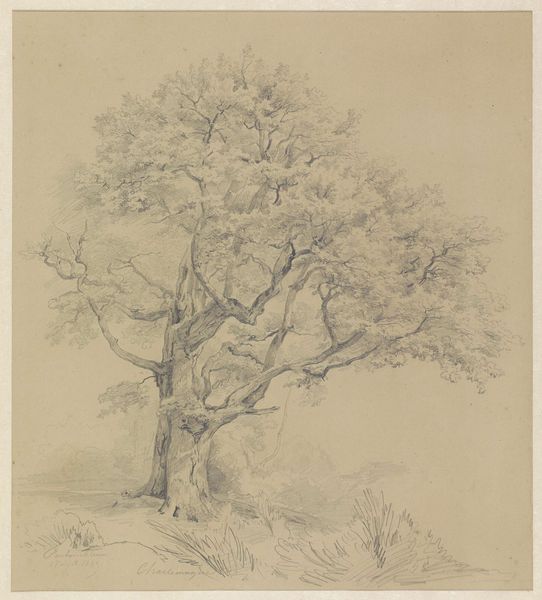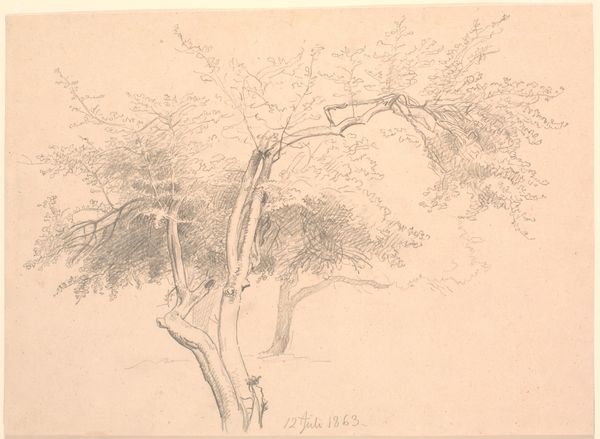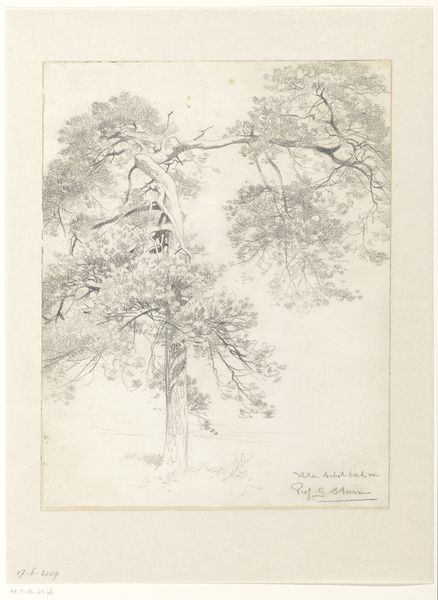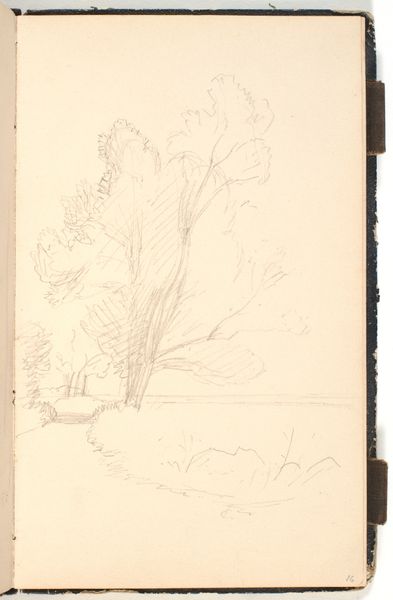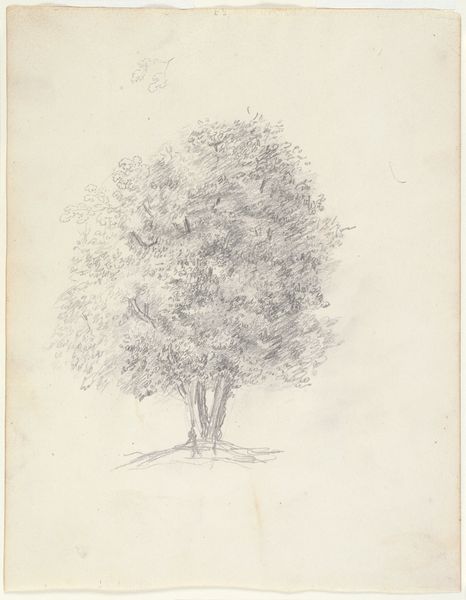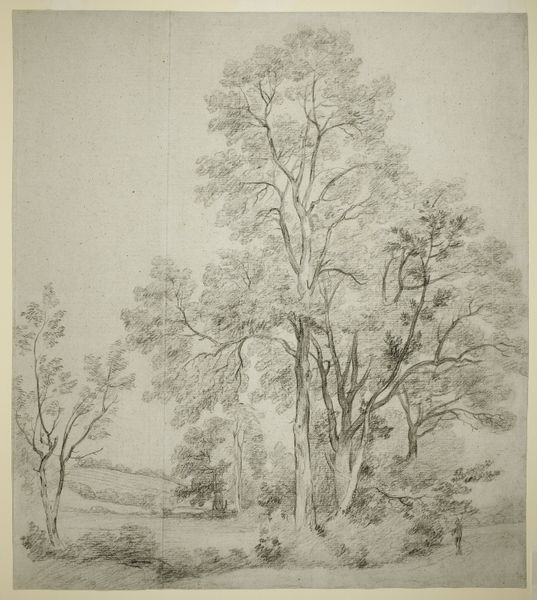
drawing, pencil
#
drawing
#
landscape
#
pencil
#
academic-art
#
realism
Dimensions: 10 1/16 x 8 1/8 in. (25.6 x 20.7 cm)
Copyright: Public Domain
Curator: This drawing is entitled "Study of a Tree" by Tina Blau, dating back to 1863. It's currently held at the Metropolitan Museum of Art. My immediate impression is its delicate simplicity and detail of the foliage. It gives me a feeling of serene observation. Editor: Serene, perhaps, but to me, it shouts "process!" Look at the various grades of the pencil strokes—they imply a deliberate recording of textures: bark, leaves, fence wood. Notice also, how the materiality emphasizes the artist's labor—it’s a work of close attention and precise manual skills in the context of academic art practices of the time. Curator: Absolutely. The texture does speak to its realistic elements, and that certainly can remind us of the importance and the role that academic art had at the time, yet I can’t overlook how the image of a tree is so universally symbolic. Throughout history, trees represent life, growth, interconnectedness… It makes me think about Blau's potential symbolic message in her work. Editor: While the symbolism resonates universally, I'd push to see how these elements function in their specific time. What kind of pencil would Blau have used? How accessible were these materials? The drawing reveals a set of specific economic and cultural preconditions about academic studies—its style of realism wouldn’t have been achievable without such materials. Curator: Yes, understanding that relationship between materials and message is valuable. Trees often symbolize the cycle of life and death, resilience and nature’s beauty… It resonates in many belief systems and appears cross-culturally. We’re both drawn to what interests us, yet both relate it back to its context to better interpret and value art history, albeit through differing approaches. Editor: Exactly. By noticing and carefully dissecting the marks, the paper, the intention of making this tree tangible through artistic process we can see the artist engaging with contemporary issues of materiality, of craft and production that, coupled with its iconography, ultimately builds meaning. Curator: Seeing them both provides richer layers of art viewing. Editor: Precisely, a complete understanding is only achieved with a dual material and symbol understanding of artistic heritage.
Comments
No comments
Be the first to comment and join the conversation on the ultimate creative platform.
